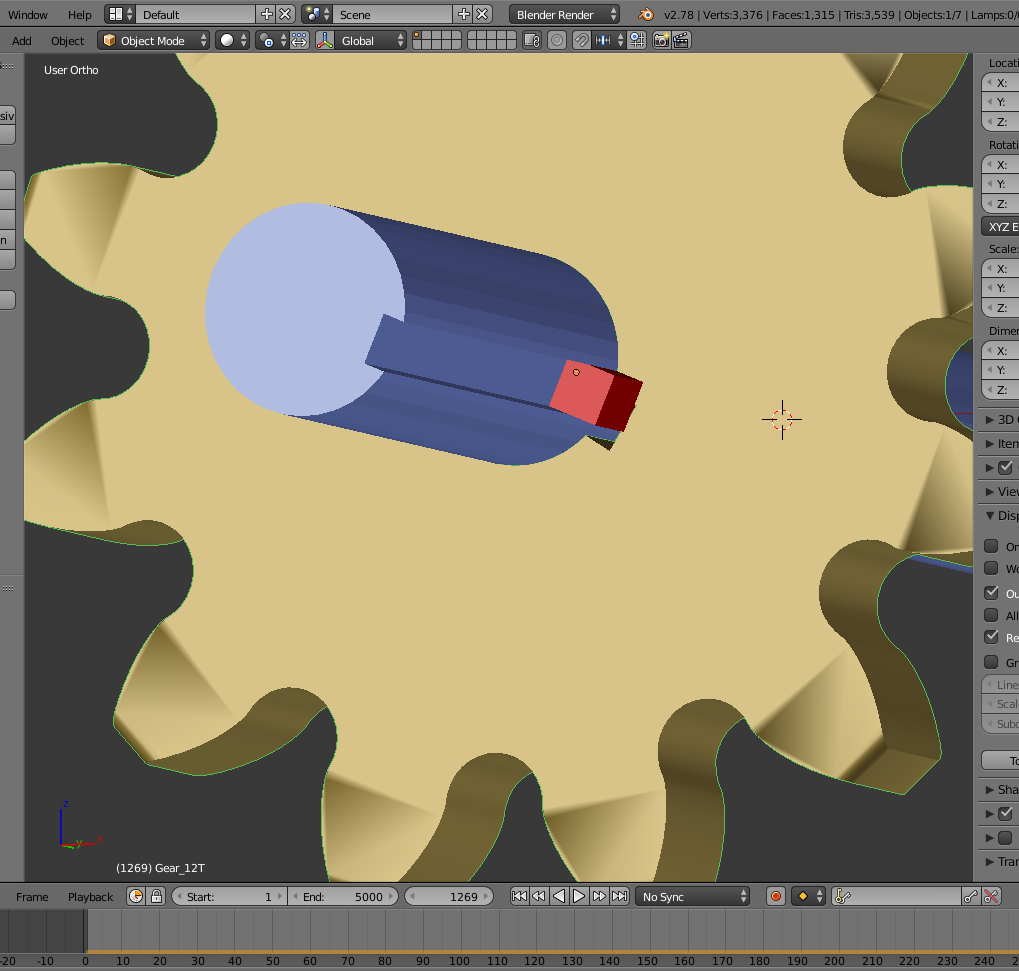This sounds like it should be simple but I've googled and looked through SE questions but can't find a good solution to the following problem. I have a shaft with a keyseat machined into it, a key and a geometrically correct involute gear. I want this as true to life as I can, I want the shaft to rotate the key which then transmits its power to the gear using physics. After about four rotations, it looks as though the gear has rotated a little more than the shaft. If anything I would have expected the opposite. This is what I have:
1) a cylindrical shaft with a square keyseat (using a rectangular prism/boolen subtraction)
2) a key in the keyseat (just a rectangular prism parented to the shaft)
3) a complex geometrically correct involute gear (constructed using an XYZ surface to calculate the gear faces consisting of about 3000 vertices - the least number I could make it).
4) the gear and the shaft have rigid body collision settings set to shape:mesh, source:base, friction:1.000, margin: 0.040. It has rigid body dynamics set to damping translation: 1.000, damping rotation:0.000
5) the shaft has the same settings except for surface response(friction):1.000
I have tried changing the rotation and damping and found that if I turn on collision margin it makes things a lot worse. Could anyone help point me in the right direction please?


